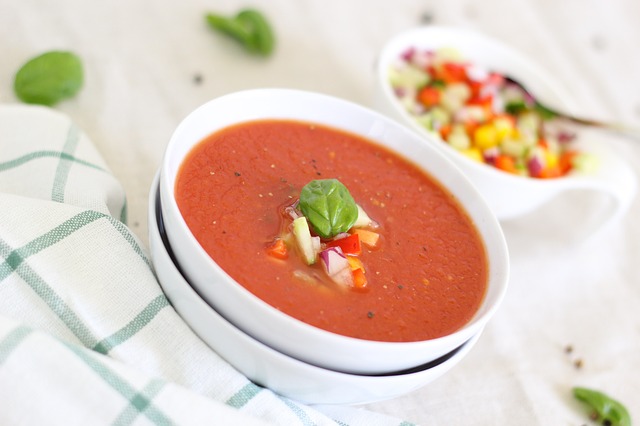
Recently I read an engrossing book about a young boy with Asperger’s Syndrome.
One of this boy’s obsessions is that he will not allow any one kind of food on his plate to touch another. Carrots must maintain their distance from peas; peas must never collide with chips. If they slide around and touch, the boy screams and refuses to eat.
Separateness must be maintained, each food must be isolated, each flavour entirely alone – no scope here for development into a rich and satisfying dish, where carrots still taste like carrots and peas like peas, but somehow taste richer and warmer in combination with other ingredients.
I once heard a French chef declare, ‘the secret of any dish is in the sauce. It enhances and binds the dish together.’ And the Japanese have a Master Sauce that lasts for years, with ingredients constantly being added and simmered together to form a rich and complex sauce with a subtle and warming flavour that improves with age.
All the difference
A good sauce or gravy will blend the sharp flavours with the mild, the hot and spicy with the smooth and subtle, and develop a flavour entirely of its own, yet still redolent of the different ingredients it has absorbed. Such a sauce can make all the difference between quickly filling the stomach or relishing a feast. Mere eating becomes ‘dining’.
One of my delights is to come home after a long day and open the door to the warm aroma of the evening meal, ready to eat. The slow cooker or the big cast-iron casserole has been simmering quietly all day, softening, blending, mellowing, transforming the ingredients into a unique combination that warms and satisfies the body as well as the soul.
Minestrone
It’s the same with Minestrone Soup. Originally the word minestrone referred to a soup made from leftovers and small scraps, with the addition of pasta and whatever vegetables or herbs were available at the time. The Roman army is said to have ‘marched on’ this soup. There is no definitive recipe, even today, despite what some of the celebrity chefs might try to tell us!
Minestrone was made throughout Italy particularly during the Middle Ages. During the 13th and 14th centuries pilgrims and others travelled on the long, hard roads throughout Europe. They would stop at night for shelter, somewhere safe to sleep and for whatever meal was available at the various churches and abbeys that offered hospitality along the way. The kitchens of these hostelries would prepare huge pots of a nourishing soup to serve to the travellers and gradually the meaning of the word came to denote ‘the dish that is served’.
The Italian minestrare means ‘to serve’. You can see the link with our modern English word ‘ministry’.
Alone in a crowd
Perhaps a flourishing church community could be likened to a good sauce, or minestrone. We can worship God as an assortment of individuals, separate and sitting alone like peas and carrots and chips on a plate, uneasy if we get too close to each other.
In some churches one can be quite alone in a crowd of other worshippers and sometimes that can feel quite comfortable. But if we share and allow ourselves to mingle and our flavours to blend, we can become a rich minestrone, nourishing our spirits and sharing God’s love and ministering to our community.

Sheelagh Wegman, BA, IPEd Accredited Editor is a freelance editor and production editor for the Tasmanian Anglican magazine. She enjoys cooking, sings in the choir of St David’s Cathedral in Hobart and lives in bushland on the foothills of Mt Wellington.
Sheelagh Wegman’s previous articles may be viewed at http://www.pressserviceinternational.org/sheelagh-wegman.html

Sheelagh Wegman is a freelance writer and editor. She is in the community of St David’s Cathedral in Hobart and lives in the foothills of kunanyi/Mt Wellington.
Sheelagh Wegman’s previous articles may be viewed at http://www.pressserviceinternational.org/sheelagh-wegman.html